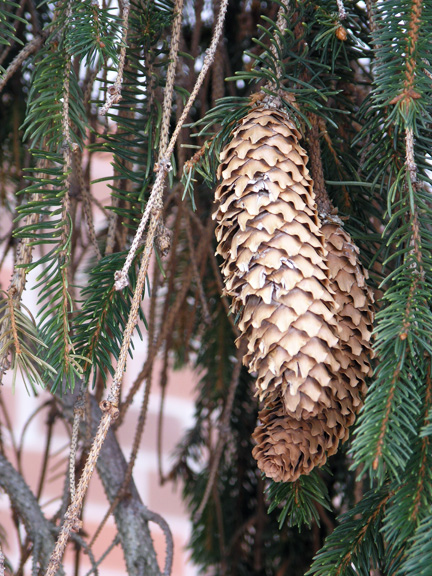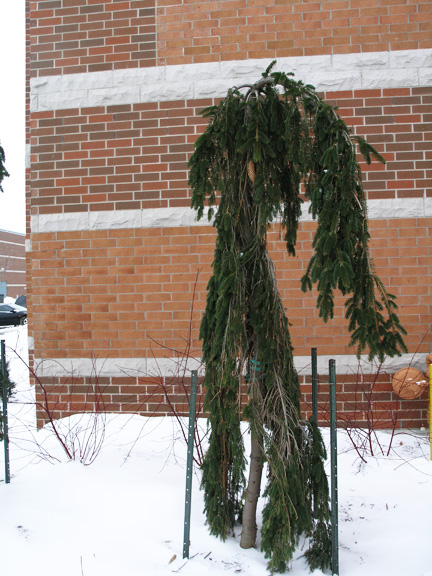
Woody > Picea > Picea abies > Picea abies 'Pendula'
Picea abies
'Pendula'
Weeping Norway Spruce
Mike's
Opinion


"
A rather brash but loveable form of the Norway spruce. Its bold, distinct form causes it to be quite pronounced in the landscape so caution is needed in its use.
Michael Pascoe, NDP., ODH., CLT., MSc. (Plant Conservation)
"
| Family |
| Pinaceae |
| Genus |
| Picea |
| Species |
| abies |
| Cultivar |
| 'Pendula' |
| Category |
| Woody |
| Type |
| Tree (evergreen) |
| Pronunciation |
| USDA Hardiness Zone |
| 3–8 |
| Canadian Hardiness Zone |
| 3a |
| Temperature (°C) |
| -37 |
| Temperature (°F) |
| -35 |
| Height |
| 5–7.5 m |
| Spread |
| 3 m |
Photographs
Description and Growing Information
Flowering Period
| General Description |
| ‘Pendula’ is an irregularly shaped weeping evergreen tree that can be trained in a variety of ways for specimen use. It can also serve as a woody ground cover or cascade over a stone wall. |
| Cultivation |
| It is a relatively low maintenance tree that is better adapted for colder climates. It will do best in full sun and it must be staked and trained to grow upwards. It prefers moist conditions at a young age, but will not tolerate standing in water. Soil type or pH is not of high importance but preferably it should be well-drained. It is able to handle salt and urban pollution. |
| Shape |
| When staked and grown upright, it is conical to pyramidal with weeping branches. |
| Growth |
| Slow |
| ID Characteristic |
| This cultivar has a distinctive weeping habit. |
| Pests |
| No serious insect or disease problems but it can be susceptible to canker, aphids, spruce budworm and mites. |
| Habitat |
| Horticultural origin. |
| Bark/Stem Description |
| Gray and thin bark on young trees which thickens into flaking surface scales at maturity. |
| Flower/Leaf Bud Description |
| Red or light brown conical shaped, not resinous, approximately 6 mm long. |
| Leaf Description |
| Stiff and sharp dark green needles approximately 2 cm long. |
| Flower Description |
| Monoecious. The males are axillary and red, the females are terminal and are a darker red, approx. 2.5 cm. |
| Fruit Description |
| Cylindrical cones hanging from the end of branches. They are approximately 7.5–15 cm long and 2–5 cm wide, green when young; brown when mature; quite pronounced. |
| Colour Description |
| The foliage emerges lime green in the spring. The needles do not develop any appreciable autumn colour. Bark is grey–brown. |
| Texture Description |
| Medium. |
| Notable Specimens |
| The Gardens of Fanshawe College, London, Ontario. |
| Propagation |
| Propagated by grafting. Cuttings taken in December from the lower portion of the tree; are grafted onto the P . abies rootstock. |

